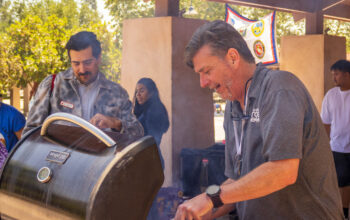Historical based textbooks about social injustice may be boring to some, but when given a new platform in cinema it broadens its audience, and gives a unique opportunity for students to receive an education in a more enjoyable way.
According to ASO Social-Cultural committee member Stephanie Lopez, offering students a chance to relax with a showing of Oscar winner for Best Picture, “The Green Book”. Directed by Peter Farrelly, the two hour drama was screened in the Great Hall on March 26.
“The social-cultural committee planned this to just have something for students to come to and know that ASO does plan events for students specifically, because we’re here for students,” Lopez said.
Lopez was in charge of the event, but ASO Social-Cultural Committee Chairperson Nicole Alfaro was also in attendance.
“We decided to create another relaxing event for students because we understand that midterms can be super stressful,” Alfaro said.
She also had a comment on bringing someone knowledgeable on the history found in the film in to talk about the movie.
“It’ll be like you’re enjoying, relaxing [with] the movie and then at the same time you’re witnessing things that have happened and how some [of those] things relate to nowadays and it’s a good way to learn about different issues happening,” Alfaro said.
According to ASO Vice President Dominic LeFort, it was necessary to get faculty approval to show the film.
Professor James McKeever, chairman of history, humanities, philosophy and sociology departments, agreed to not only attend but have an open forum conversation about the film afterwards.
McKeever, an African-American had several comments about the movie and how it’s title was deceptive.
“Part of it I kind of did have a large issue with [like] the fact that if we look at the first half of the movie it is all about the white character and it’s called ‘The Green Book’ about this thing that happened to African-Americans. And then they had to make the protagonist the white character,” McKeever said.
McKeever also expounded on the theme of stereotypes and prejudice.
“Also I don’t know if there were concepts of what it means to be black in the film too,” McKeever said. “Supposedly he’s [Dr. Shirley] not black because he doesn’t eat fried chicken and he acts like he’s never seen it before which is hard to believe for anybody who’s African-American.”
Dr. Donald Shirley is the primary African-American character in the film, but is well educated, in contrast to the more commonly educated Italian-American from the city.
The movie began around 3:30 P.M and the forum ended around 6:15 P.M.




